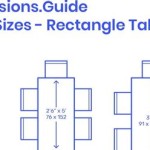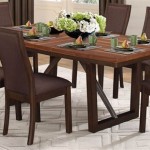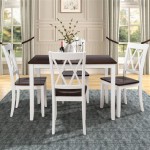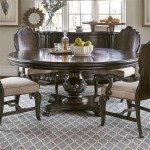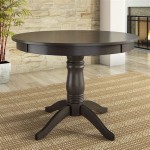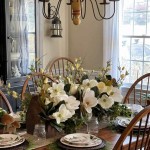The Allure and Practicality of the 6-Seater Oval Dining Table
The dining table is often considered the heart of a home, a central gathering place for meals, conversations, and shared experiences. While rectangular and round tables are common choices, the 6-seater oval dining table presents a unique blend of aesthetics and functionality that makes it an increasingly popular option for modern households. This article will explore the various aspects of the 6-seater oval dining table, focusing on its design advantages, space optimization capabilities, material considerations, and style versatility.
Design Advantages of the Oval Shape
The oval shape offers several distinct advantages over traditional rectangular or round dining tables. Unlike a rectangular table, an oval table eliminates sharp corners, promoting a more relaxed and inviting atmosphere. This is particularly beneficial in homes with young children, reducing the risk of accidental bumps and injuries. The absence of corners also facilitates easier movement around the table, creating a smoother flow within the dining space.
Furthermore, the oval shape provides a sense of intimacy akin to a round table, but with the added benefit of increased seating capacity. While a round table can comfortably accommodate a specific number of individuals, the elongated oval shape allows for flexible seating arrangements. This adaptability is especially useful when hosting guests or accommodating varying group sizes. The shape encourages conversation and interaction, allowing individuals to see and hear each other more easily than with a long rectangular table.
The oval shape also contributes to a visually appealing aesthetic. It can soften the hard lines often found in a room, adding a touch of elegance and sophistication. The curves of the oval create a sense of harmony and balance, making it a focal point that draws the eye without overwhelming the space. This inherent visual appeal makes the 6-seater oval dining table a desirable choice for homeowners seeking to enhance the overall design and ambiance of their dining area.
Space Optimization and Layout Considerations
One of the primary considerations when selecting a dining table is its ability to fit comfortably within the available space. The 6-seater oval dining table offers a compelling solution for optimizing space, particularly in smaller or oddly shaped dining rooms. Its elongated shape allows it to fit neatly into narrow spaces where a rectangular table might feel cramped, while its curved sides prevent it from dominating the room in the same way a square table might.
When planning the layout of a dining room with a 6-seater oval table, it is crucial to consider the surrounding furniture and traffic flow. Allowing ample space around the table is essential for comfortable seating and easy movement. A general rule of thumb is to provide at least 36 inches of clearance between the table and any walls or other furniture. This ensures that individuals can easily pull out their chairs and walk around the table without obstruction.
The placement of the table within the room can also significantly impact the overall aesthetic and functionality of the space. Placing the table centrally can create a focal point, while positioning it near a window can maximize natural light and create a more inviting atmosphere. Careful consideration of these factors can help to optimize space and create a dining area that is both functional and visually appealing. The oval shape allows for flexibility in placement, making it adaptable to various room configurations.
In addition to considering the table's dimensions, it's also important to account for the chairs that will be used. Chair size and style can significantly impact the overall space requirements. Chairs with arms, for example, will require more space than chairs without arms. It is advisable to measure the chairs and factor these measurements into the overall layout planning.
Material Selection and Durability
The choice of material for a 6-seater oval dining table significantly impacts its aesthetic appeal, durability, and maintenance requirements. Common materials include wood, glass, metal, and stone, each offering distinct advantages and disadvantages.
Wood is a classic and versatile choice, offering warmth, natural beauty, and durability. Hardwoods such as oak, maple, and walnut are particularly popular due to their strength and resistance to scratches and dents. Wood tables can be stained or painted to match a variety of décor styles, making them a highly adaptable option. Careful consideration of the wood type and finish is essential to ensure the table's longevity. Proper sealing and regular cleaning are crucial for maintaining its appearance and preventing damage from moisture or spills.
Glass tabletops offer a sleek and modern aesthetic, creating a sense of openness and light within the dining room. Tempered glass is a common choice for dining tables due to its strength and safety. However, glass tables can be more susceptible to scratches and fingerprints and may require more frequent cleaning. The base material supporting the glass top also plays a crucial role in the table's overall stability and design. Metal or wood bases can complement the glass top, creating a visually striking and durable piece of furniture.
Metal tables offer a contemporary and industrial aesthetic, known for their strength and durability. Stainless steel, wrought iron, and aluminum are common choices for metal dining tables. Metal tables are often resistant to scratches, dents, and moisture, making them a low-maintenance option. However, they can sometimes feel cold or sterile and may require careful coordination with other elements in the dining room to create a warm and inviting atmosphere. Powder coating can add color and texture to metal tables, enhancing their visual appeal.
Stone tabletops, such as marble or granite, offer a luxurious and elegant aesthetic. Stone tables are incredibly durable and resistant to heat and scratches. However, they can be quite heavy and may require professional installation. Stone tables also tend to be porous and may require sealing to prevent staining. Their high cost can also be a significant factor for some homeowners.
Ultimately, the best material for a 6-seater oval dining table depends on individual preferences, budget, and lifestyle. Considering the pros and cons of each material and carefully evaluating its suitability for the intended use is essential. Durability, maintenance requirements, and aesthetic appeal should all be factored into the decision-making process.
Style Versatility and Integration with Existing Décor
The 6-seater oval dining table is remarkably versatile, capable of complementing a wide range of interior design styles. From traditional to contemporary, the oval shape can be seamlessly integrated into various décor schemes.
In traditional settings, a wooden oval table with ornate detailing and a rich finish can create a sense of timeless elegance. Pairing the table with upholstered chairs featuring classic patterns and textures can further enhance the traditional aesthetic. Antique or vintage accessories can also be incorporated to create a cohesive and harmonious look. The oval shape softens the formality often associated with traditional dining rooms, adding a touch of warmth and intimacy.
For contemporary interiors, a glass or metal oval table with clean lines and minimalist design can create a modern and sophisticated look. Pairing the table with sleek, contemporary chairs in neutral colors can enhance the streamlined aesthetic. Simple accessories and artwork can be used to add visual interest without overwhelming the space. The oval shape adds a touch of softness and elegance to the often stark and angular elements of contemporary design.
In rustic or farmhouse settings, a wooden oval table with a distressed finish and natural wood grain can create a warm and inviting atmosphere. Pairing the table with mismatched chairs or benches can add a touch of character and charm. Natural materials such as linen, cotton, and jute can be used to enhance the rustic aesthetic. The oval shape complements the informal and relaxed atmosphere of a rustic dining room, creating a welcoming space for gathering with family and friends.
Eclectic interiors offer the opportunity to experiment with different styles and materials. An oval table can serve as a unifying element, tying together disparate pieces of furniture and décor. Mixing and matching different chair styles, colors, and textures can create a unique and personalized look. The oval shape adds a touch of sophistication and elegance to the eclectic mix, creating a cohesive and visually appealing space.
The key to successfully integrating a 6-seater oval dining table into an existing décor is to select a table that complements the overall style and color scheme. Consider the existing furniture, flooring, and wall colors when making a decision. Pay attention to the details, such as the table's finish, leg style, and edge profile. By carefully considering these factors, it is possible to choose an oval dining table that enhances the overall aesthetic of the dining room and creates a stylish and inviting space.

Homelegance Deryn Park Cherry Extendable Oval Dining Table

Dovelina 67 Oval Dining Table Mid Century Modern Wood Kitchen For 6 People Natural

Leisuremod Tule 7 Piece Dining Set In Steel With 6 Velvet Seat Chairs And 71 Oval Table Black Platinum Blue Tt70 Cbl18 Bu The Home

East West Furniture Piece Dining Room Set An Oval Kitchen Table And 6 Chairs Saddle Brown Seat Options Plai7 Sbr C Wal Com

Christopher Knight Home Jiana Walnut Mdf Wood 88 In W Double Pedestal Oval Dining Table 6 Seat 131309

Maru Oval 6 8 Seater Extending Oak Pedestal Dining Table

Ellipse Fumed Oak 6 Seater Dining Table Belgica Furniture

The Home Story 6 Seater Oval Dining Table Cover 60 X 90 In

Deryn Park Oval Dining Room Set

Homary Japandi 39 55 Extendable Dining Table For 6 Person Black Oval Round Wood Pedestal

